La figure de Lorenzo Ventapane demeure paradoxale dans l’histoire de la lutherie italienne du tournant des XVIIIe et XIXe siècles. D’un côté, son nom apparaît régulièrement dans les ouvrages spécialisés comme celui d’un des plus importants luthiers napolitains en dehors de la dynastie Gagliano et ses instruments – ses violoncelles en particulier – sont décrits comme de premier ordre. D’un autre côté, son œuvre reste mal documentée et souffre de mauvaises attributions et de lacunes en collections muséales. La découverte d’un nouveau violoncelle de Lorenzo Ventapane, présenté lors de nos ventes d’instruments de prestige de décembre 2025, nous donne l’occasion de revenir sur le travail de ce luthier, et de donner un aperçu de sa production de violoncelles.
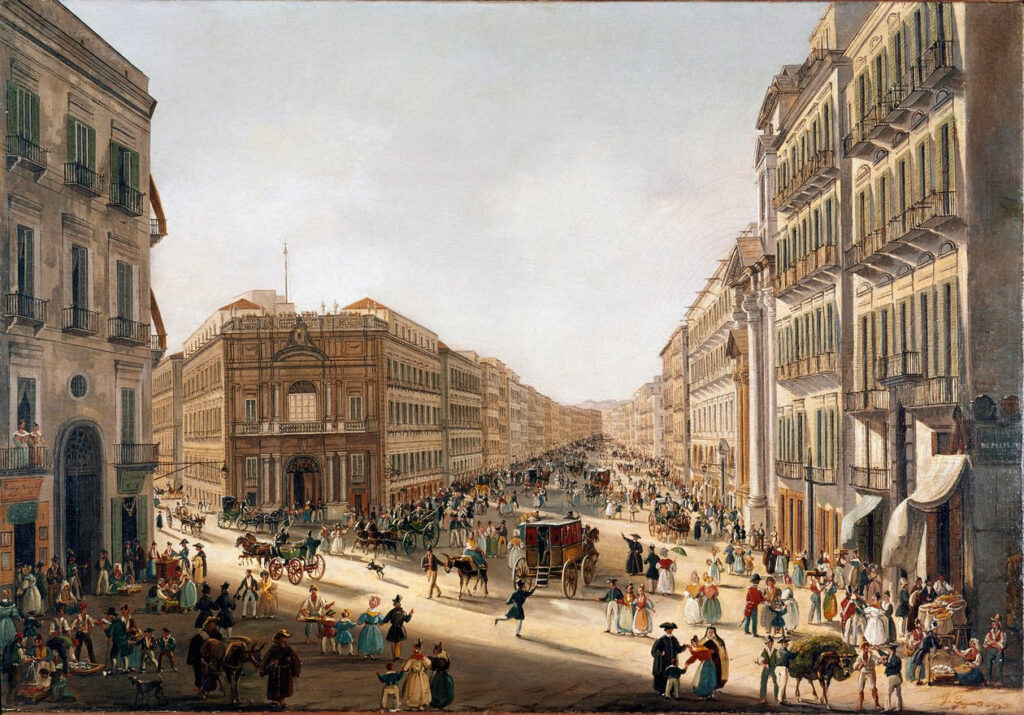
Lorenzo Ventapane est né en 1780 et mort en 1843. Il fut actif à Naples durant la première moitié du XIXe siècle. Il appartient à une dynastie de luthiers et est généralement considéré comme le neveu de Vincenzo Ventapane (1750-1799) – figure majeure de la génération précédente. Vincenzo Ventapane est généralement présenté comme ayant été l’élève d’Antonio et Raffaele Gagliano. Selon plusieurs sources, Lorenzo Ventapane aurait lui aussi été formé par un membre de la famille Gagliano – probablement Giovanni Gagliano (1751-1820) ou son fils Niccolò II Gagliano (1787-1866). Toutefois, cette hypothèse est remise en doute par plusieurs experts, dont Jonathan Marolle :
“Personnellement, j’ai peine à croire qu’il ait pu être élève d’un des Gagliano. Ses modèles sont assez éloignés de ceux qu’on peut trouver chez les différents membres de la famille.”
Entretien avec Jonathan Marolle, Vatelot-Rampal, Paris Luthier, spécialiste des instruments du quatuor à cordes. Expert près la Cour d’Appel de Paris, novembre 2025
Une chose est sûre, les luthiers de ces deux familles étaient en contact. En 2023, Vichy Enchères avait d’ailleurs vendu un intéressant violoncelle 1/2, portant une étiquette apocryphe de Gagliano, dont la table et la tête étaient probablement de Lorenzo Ventapane.
Vers 1800, Lorenzo Ventapane s’établit au 23 Calata Borgo di Loreto, à Naples, puis au n° 35 de la Strada Donnaregina[1]. Walter Hamma le décrit comme “un luthier napolitain à la personnalité franche et originale”[2], capable d’assimiler l’influence de la tradition tout en affirmant une facture propre. Il s’imposa en effet comme l’un des principaux représentants de la lutherie napolitaine de son temps et il est, encore aujourd’hui, souvent considéré comme “le plus important des luthiers napolitains en dehors de la famille Gagliano”[3].
Les étiquettes d’époque relevées sur ses instruments le désignent comme un “fabbricante di strumenti armonici” ou “di strumenti da corde”, ce qui suggère que sa production ne se limitait pas aux seuls violons mais qu’elle embrassait l’ensemble des instruments à cordes frottées et pincées.
Il fut actif probablement jusque dans les années 1830-1840, avant sa mort à Naples en 1843. Par la suite, Pasquale Ventapane (1830–1890), qui était sans doute son fils, œuvra également à Naples.

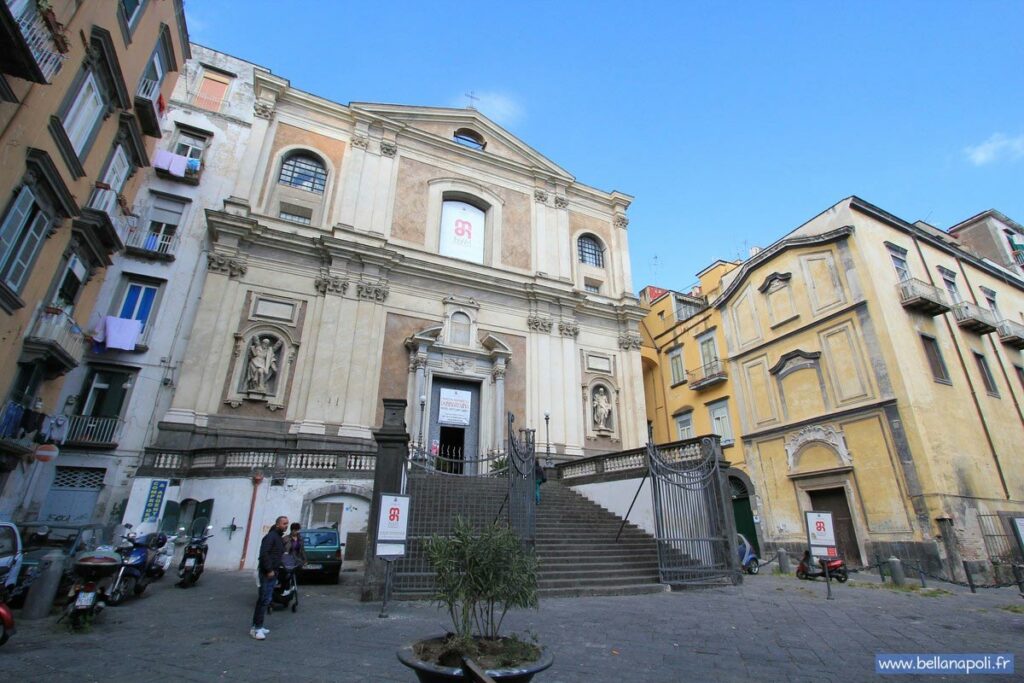
Les sources anciennes, de Lütgendorff[4] à Jalovec[5], s’accordent à reconnaître en Lorenzo Ventapane une personnalité marquante de l’école napolitaine, à la facture personnelle et dont la réputation s’étendit rapidement bien au-delà de Naples.
[1] René Vannes, Dictionnaire universel des luthiers, tome second, tome additif et correctif, 1959
[2] Walter Hamma, Meister Italienischer geigenbaukunst, Florian Noetzel, Ars Musica, Allemagne, 1993
[3] Tim Ingles, Four Centuries of Violin Making, 2006
[4] Willibald Leo von Lütgendorff, Die Geigen und Lautenmacher vom Mittelalter bis zur Gegenwart, II, 1922
[5] Karel Jalovec, Italienische Geigenbauer, Artia, 1957

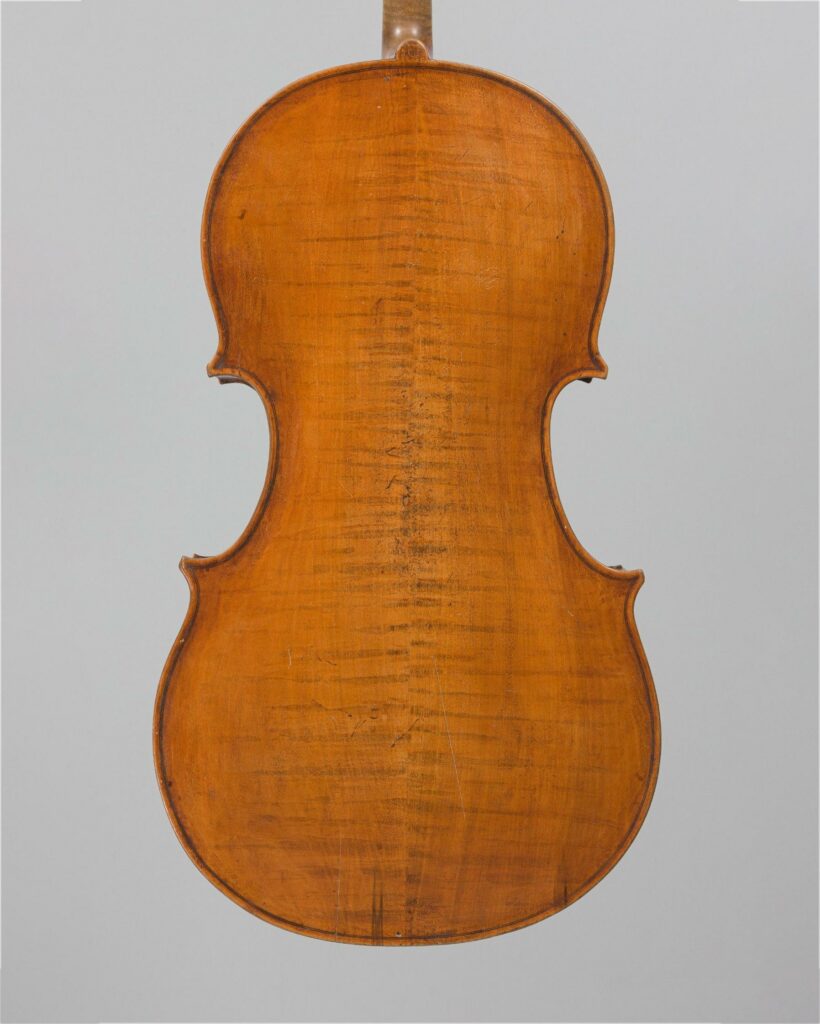


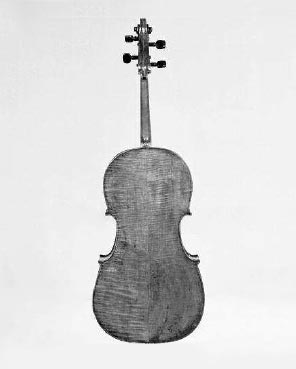
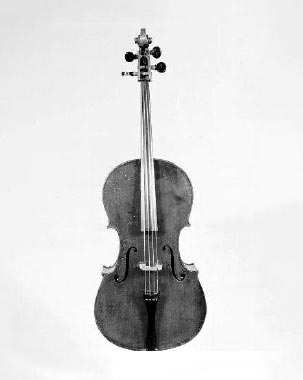
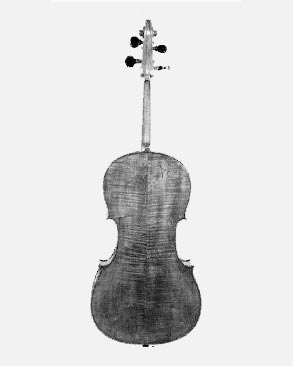


Les violoncelles authentiques de Lorenzo Ventapane parvenus jusqu’à nous sont d’une grande rareté. On n’en connaît qu’un petit nombre, environ une quinzaine, majoritairement réalisés entre 1820 et 1825, dans son atelier de la Strada Donnaregina à Naples.
Parmi ces instruments, on compte notamment un violoncelle daté de 1824 qui a appartenu à Jacques Français et Rembert Wurlitzer, dont les fonds d’archives sont aujourd’hui conservés au Smithsonian à Washington.
D’autres violoncelles attribués à Ventapane présentent des étiquettes de la famille Gagliano, rappelant la proximité des ateliers napolitains du début du XIXe siècle et la parenté stylistique de certains de leurs instruments.
On connaît également quelques violoncelles plus tardifs, datés vers 1840, sans qu’il soit toujours possible de déterminer s’ils sortent directement de son atelier ou de celui de Pasquale Ventapane, actif dans les décennies suivantes.
Les recherches de provenance montrent que plusieurs modèles sont aujourd’hui entre les mains d’un certain nombre de musiciens professionnels, tels que ceux de la Chamber Orchestra of Europe et de l’Orchestra of the Age of Enlightenment de Londres. On peut aussi citer le violoncelliste solo de la Brussels Philharmonic, Karel Steylaerts, jouant sur un modèle de 1834, ou encore Payam Taghadossi, qui utilise notamment un instrument au sein de l’ensemble “Trio Gagliano”.
Dans les collections publiques, les violoncelles de Lorenzo Ventapane sont encore plus rares. Toutefois, il est intéressant de noter qu’un inventaire du Conservatorio di Musica San Pietro a Majella, réalisé vers 1900, mentionnait vingt-quatre violoncelles de Lorenzo Ventapane destinés à l’enseignement. Aujourd’hui, seuls trois instruments attribués à Lorenzo Ventapane subsisteraient dans ces collections[1].
[1] Sisto, Luigi. Il Museo degli Strumenti Musicali del Conservatorio di “San Pietro a Majella”: catalogazioni e interventi di restauro. Dans Présentation de la fiche SMO (Strumenti Musicali – Organo). Vers la définition des fiches des autres instruments de musique. Actes du séminaire – Crémone, 19-20 mars 2009. Crémone, 2009



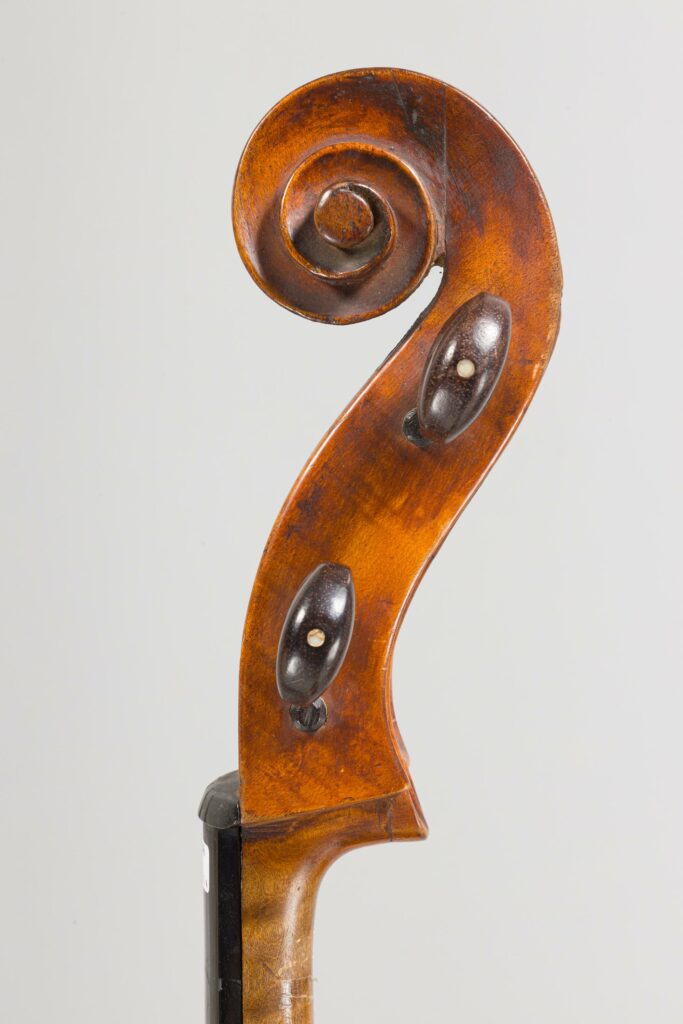

Réalisé autour des années 1810-1820, le violoncelle de Lorenzo Ventapane présenté à la vente de Vichy Enchères, le 4 décembre 2025, vient donc enrichir ce mince corpus de modèles authentiques.
Cet instrument illustre la singularité de sa facture. Comme nous le décrit Jonathan Marolle :
“Lorenzo Ventapane a un style vraiment personnel. Ses modèles sont assez éloignés de ceux qu’on peut trouver chez les différents membres de la famille Gagliano. On peut éventuellement noter une certaine similitude dans le dessin de ff avec les instrument de Rafaelle et Antonio Gagliano qui travaillaient à la même époque. Son travail s’inscrit avant tout dans la tradition napolitaine, reconnaissable à son vernis jaune sec, à ses filets dont les blancs sont en hêtre, et à la manière caractéristique dont les tables sont goupillées aux éclisses.”
Entretien avec Jonathan Marolle, Vatelot-Rampal, Paris Luthier, spécialiste des instruments du quatuor à cordes. Expert près la Cour d’Appel de Paris, novembre 2025
L’instrument porte également une étiquette de restauration par Postiglione, autre figure importante de la lutherie napolitaine à la fin du XIXe siècle.
Cet élément fait écho à un des violoncelles conservés au Conservatoire San Pietro a Majella de Naples, qui présente lui aussi une étiquette de restauration du même luthier[1]. Postiglione, à la tête d’un atelier important dès les années 1880, aurait pu, selon Jonathan Marolle, assurer l’entretien d’une partie des instruments du Conservatoire.
Enfin, la provenance apporte un éclairage singulier sur la trajectoire de cet instrument, issu de l’inventaire d’un luthier argentin actif dans la seconde moitié du XXe siècle. Son parcours témoigne de la large diffusion des instruments napolitains, dont la réputation s’est étendue jusqu’à l’Amérique du Sud.
[1] Cautela, Gemma ; Starita, Lorella ; Sisto, Luigi (dirs.). Dal Segno al Suono. Il Conservatorio di Musica “San Pietro a Majella”. Repertorio del patrimonio storico-artistico e degli strumenti musicali. Naples : Arte-m, 2010
Ce violoncelle de Lorenzo Ventapane offre ainsi une rare occasion de redécouvrir le savoir-faire de ce maître napolitain du XIXe siècle. Alors ne manquez pas la vente de cet instrument remarquable le 4 décembre 2025 à Vichy Enchères !
Lorenzo Ventapane is an enigmatic figure in the history of Italian violin making at the turn of the 18th and 19th centuries. On the one hand, his name appears regularly in violin publications as one of the most important Neapolitan makers, alongside the Gagliano dynasty, and his instruments – in particular his cellos – are considered first class. On the other hand, there is little information available about his work, which is often misunderstood due to misattributions and lack of representation in museum collections. The discovery of a new cello by Lorenzo Ventapane, which will be auctioned during our sale of fine string instruments in December 2025, is the opportunity to revisit the work of this maker and provide a brief outline of his cello production.

Lorenzo Ventapane was born in 1780 and died in 1843. He was active in Naples during the first half of the 19th century. He comes from a long line of violin makers and is generally considered the nephew of Vincenzo Ventapane (1750-1799) – a leading figure of the generation above. Vincenzo Ventapane is generally thought to have trained with Antonio and Raffaele Gagliano. According to several sources, Lorenzo Ventapane would also have be taught by a member of the Gagliano family – probably Giovanni Gagliano (1751-1820) or his son Niccolò II Gagliano (1787-1866). However, this theory has been challenged by several experts, including Jonathan Marolle:
“Personally, I find it hard to believe that he could have been a pupil of one of the Gaglianos. His models are quite different from those used by the various members of the family.”
Interview with Jonathan Marolle, Vatelot-Rampal, Paris Luthier, specialist in string quartet instruments. Expert at the Paris Court of Appeal, November 2025
One thing is certain: the makers of these two families interacted with each other. In 2023, Vichy Enchères sold an interesting half-size cello, bearing a facsimile Gagliano label, whose front and head were probably made by Lorenzo Ventapane.
Around 1800, Lorenzo Ventapane set up shop at 23 Calata Borgo di Loreto, in Naples, and later at number 35 Strada Donnaregina[1]. Walter Hamma described him as “a Neapolitan maker with a forthright and original personality”[2], capable of incorporating tradition whilst asserting his own distinctive style. He became one of the leading representatives of the Neapolitan school of his time and is still often considered today to be “the most important Neapolitan maker apart from the Gagliano family”[3].
The original labels found in his instruments describe him as a “fabbricante di strumenti armonici” or “di strumenti da corde”, suggesting that his production was not limited to violins but included all sorts of bowed and plucked string instruments.
He was probably active until the 1830s or 1840s, before his death in Naples in 1843. Subsequently, Pasquale Ventapane (1830–1890), who was likely his son, also worked in Naples.


Early sources, from Lütgendorff[4] to Jalovec[5], , concur in recognizing Lorenzo Ventapane as a leading figure of the Neapolitan school, with a distinctive style and a reputation that quickly spread far beyond Naples.
[1] René Vannes, Dictionnaire universel des luthiers, tome second, tome additif et correctif, 1959
[2] Walter Hamma, Meister Italienischer geigenbaukunst, Florian Noetzel, Ars Musica, Allemagne, 1993
[3] Tim Ingles, Four Centuries of Violin Making, 2006
[4] Willibald Leo von Lütgendorff, Die Geigen und Lautenmacher vom Mittelalter bis zur Gegenwart, II, 1922
[5] Karel Jalovec, Italienische Geigenbauer, Artia, 1957









Authentic cellos by Lorenzo Ventapane that have survived to the present day are extremely rare. Only a small number, around 15, are known, and they were mostly made during the period 1820 to 1825 in his workshop on the Strada Donnaregina in Naples. Amongst these instruments is a cello dated 1824 that belonged to Jacques Français and Rembert Wurlitzer, whose historical archives are now held at the Smithsonian Institution in Washington D.C..
Other cellos attributed to Ventapane bear labels of Gagliano family members, denoting the close relationship between these two Neapolitan workshops in the early 19th century and the stylistic similarities between some of their instruments.
There are also some later cellos, dating from around 1840, for which it is not always possible to determine whether they came from his workshop or from that of Pasquale Ventapane, who was active in the following decades.
Research into the provenance of instruments reveals that several examples are now in the hands of a number of professional musicians, including members of the Chamber Orchestra of Europe and the Orchestra of the Age of Enlightenment in London. In addition, it is worth mentioning that the principal cellist of the Brussels Philharmonic, Karel Steylaerts, plays an 1834 example, and Payam Taghadossi of the “Trio Gagliano” also plays a cello made by him. Lorenzo Ventapane cellos are even rarer in public collections. However, it is interesting to note that an inventory of the Conservatorio di Musica San Pietro a Majella, compiled around 1900, listed 24 cellos attributed to Lorenzo Ventapane, which were intended for teaching. Today, only three instruments of these instruments are still thought to be in this museum’s collections[1].
[1] Sisto, Luigi. Il Museo degli Strumenti Musicali del Conservatorio di “San Pietro a Majella”: catalogazioni e interventi di restauro. In Presentation of the file SMO (Strumenti Musicali – Organo).Towards the definition of other musical instruments. Seminar proceedings – Cremona, 19–20 March 2009. Cremona, 2009





The cello by Lorenzo Ventapane included in the Vichy Enchères auction on 4 December 2025, was made circa 1810-1820, and thus joins a select group of authenticated instruments by this maker.
This cello illustrates perfectly the unique character of his instrument making. As Jonathan Marolle puts it:
“The work of Lorenzo Ventapane has a truly individual style. His models are quite different from those used by the various members of the Gagliano family. You can see a certain similarity in the design of the f-holes with the instruments of Rafaelle and Antonio Gagliano, who were active at the same time. His work is primarily rooted in the Neapolitan tradition, distinguishable by its dry yellow varnish, its purfling (the whites of which are made of beech), and the typical way in which the fronts are pinned to the ribs.”
Interview with Jonathan Marolle, Vatelot-Rampal, Paris Luthier, specialist in string quartet instruments. Expert at the Paris Court of Appeal, November 2025
The instrument also bears a restoration label by Postiglione, who is himself an important figure in Neapolitan violin making at the end of the 19th century.
This is also the case of one of the cellos preserved at the San Pietro a Majella Conservatory in Naples, which also bears a restoration label from the same maker[1]. Postiglione was in charge of a large workshop from the 1880s onward, and could, according to Jonathan Marolle, have restored some of the instruments at the Conservatory.
Finally, the provenance of this instrument sheds an interesting light on its history: it came from the workshop contents of an Argentinian maker active in the second half of the 20th century. This attests to the widespread popularity of Neapolitan instruments, whose reputation extended as far as South America.
[1] Cautela, Gemma ; Starita, Lorella ; Sisto, Luigi (dirs.). Dal Segno al Suono. Il Conservatorio di Musica “San Pietro a Majella”. Repertorio del patrimonio storico-artistico e degli strumenti musicali. Naples : Arte-m, 2010
This cello by Lorenzo Ventapane thus provides a rare opportunity to rediscover the craftsmanship of this 19th-century Neapolitan master. Don’t miss the sale of this remarkable instrument on 4 December 2025 at Vichy Enchères!